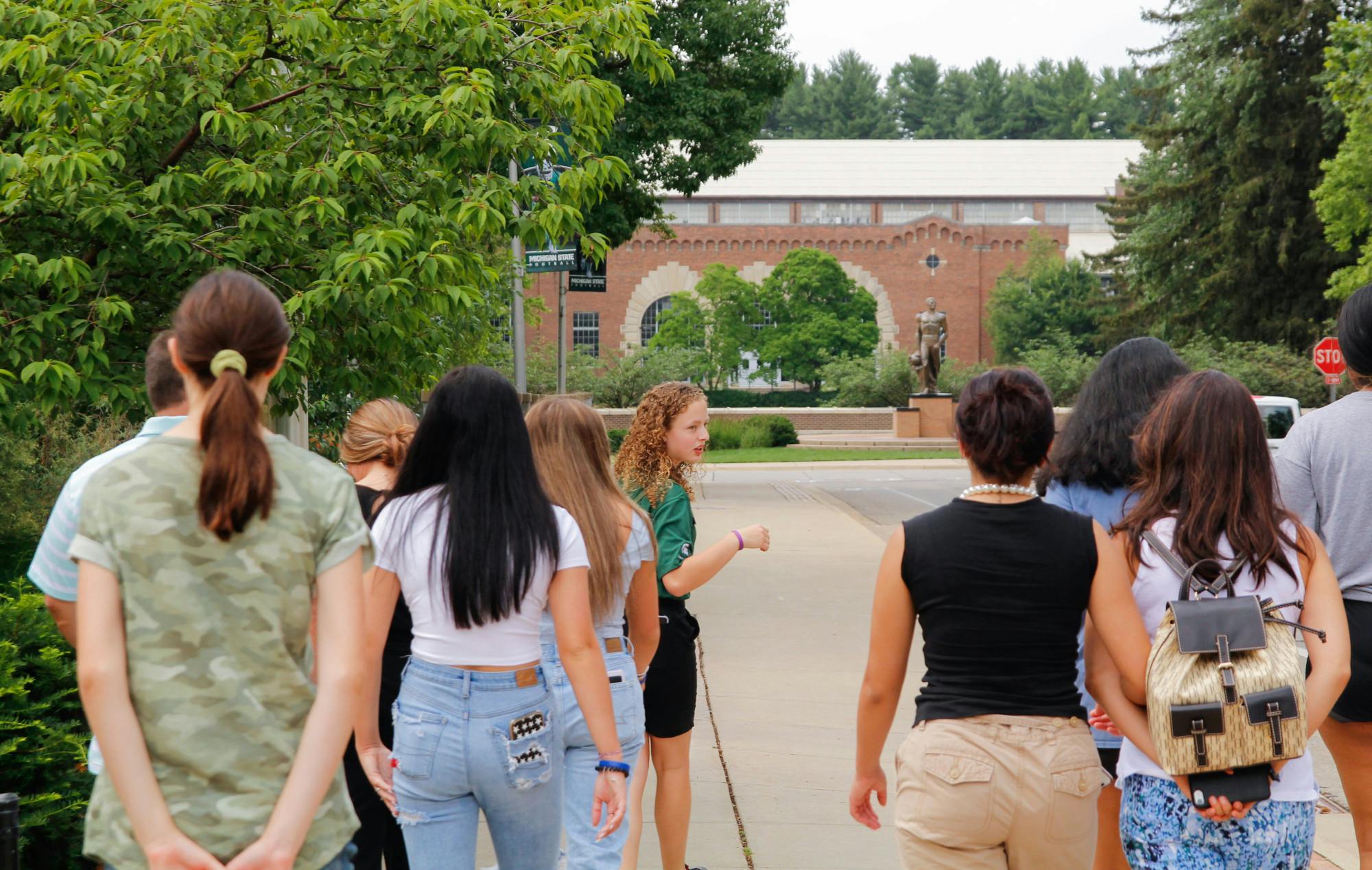Michigan State released its Diversity, Equity and Inclusion, or DEI, report for the 2020-21 and 2021-22 academic years on Tuesday.
The report features the university’s efforts to increase diversity, ensure equity, promote inclusion and enhance outreach and engagement, followed by the 2020-21 diversity at MSU data report.
“This is the first time the annual report includes a narrative portion that highlights contributions from the campus community,” Vice President and Chief Diversity Officer Jabbar R. Bennett said in an email sent on Tuesday. “While the report is only meant to be a window into MSU’s DEI efforts, it is a tribute to the dedication of many, outlining the work ahead and how it can lift all.”
In the message from the VP and chief diversity officer, Bennett said previous reports focused on data and did not represent the full scope of efforts MSU undertakes to support the recruitment, retention, advancement and success of members of underrepresented groups.
This year’s report expands on the data by incorporating the achievements and trajectory of the university’s DEI initiatives, Bennett said.
Diversity data on students
According to the report, the 2020-21 annual data report provides a fall 2020 to fall 2021, one-year comparison of student enrollment by race/ethnicity demographics, as well as a 10-year comparison of enrollment, persistence and success rates between 2010 and 2020.
Between fall 2020 and fall 2021, total enrollment for students of color increased by 3.2 percent. International student enrollment declined 9.6 percent, this decline is primarily among undergraduate students.
First-time students entering class increased for students of color by 8% despite a decline in African American/Black students by 5%. The largest increases in first-time students were among Hawaiian/Pacific Islander at 133.3% and Asian at 18%.
Of all students who entered MSU in 2014, 82% graduated within six years, compared to 73% of students of color.
The number of students who registered with the Resource Center for Persons with Disabilities, or RCPD, with permanent disabilities increased by 3.6%. There was an 11% increase in the reported learning disability type.
Workforce data regarding employees
According to the report, workforce data is a fall 2020 to fall 2021 one-year comparison of employee demographic data by race/ethnicity, legal sex, self-identified veterans and a section on disability type.
This data shows a 7.5% increase in employees reporting two or more races compared to 2020. At the same time, the number of employees in the workforce who are women decreased 1.9% from fall 2020 to fall 2021.
Of support staff 17.8% are people of color, with 7.1% African American/Black, 5.9% Hispanic/Latino/a and 3.5% Asian.
Employees who registered with permanent disabilities in RCPD increased by 3.3% from the previous year.
“This report reflects who our community members are but not their experiences during such a turbulent and unprecedented academic year,” the report reads. “MSU remains dedicated to nurturing the success of all Spartans, especially those who may have been adversely and disproportionately impacted over the past two years as faculty, staff and students continue to demonstrate their commitment to our institutional values and community standards in pursuit of inclusive excellence.”
A breakdown of MSU’s DEI efforts
The Increase Diversity section of the report features programs implemented by the university in an attempt to advance diversity.
These programs include, The Multi-Racial Unity Living Experience and Intercultural Aide Program, the Department of African American and African Studies, MSU’s Student Veterans Resource Center, the Short-Term Work Group on Names and Pronouns and the Excellence in Diversity Awards.
Support student media!
Please consider donating to The State News and help fund the future of journalism.
“Through specific data-informed initiatives, we will increase diversity throughout the MSU community with the goal of becoming a national leader in this area,” the report reads. “We will establish and sustain empirically based initiatives to increase the success of MSU’s diverse student, staff and faculty community.”
The Ensure Equity portion of the report focuses on MSU’s efforts to ensure underrepresented groups at the university can succeed.
These resources include the Creating Inclusive Excellence grant program, the Neighborhood Student Success Collaborative and TRIO Student Support Service programs, the Inclusive Campus Initiative, the First-Gen Forward Cohort and the Associated Students of Michigan State University. Ensure Equity also showcases the Diversity, Equity and Inclusion administrators and the Council of Diversity deans.
“Equity is achieved in an environment built on civility, dignity and mutual respect,” the report reads. “MSU is committed to equitable access to education.”
The section titled Promote Inclusion mentions efforts by the university to cultivate and foster an inclusive environment for everyone in the MSU community. Efforts include the Mitigating Bias Campaign, a Task Force on Racial Equity, DEI training for students and employees, Globally Inclusive Teaching Resources, an accessible campus for everyone, the Multicultural Center and a campus-wide Juneteenth celebration.
“Inclusion is demonstrated by an intentional commitment to ensure access for diverse identities, perspectives and voices,” the report reads. “We must nurture and sustain an inclusive and welcoming campus culture in which the perspectives and voices of all are respected and valued.”
The section on Enhance Outreach and Engagement features the university's efforts for health equity, including a $25 million grant from The Charles Stewart Mott Foundation to help the Flint community, a collaboration with the Henry Ford Health System and a $6 million grant from the Center for Disease Control and Prevention to close the COVID-19 racial equity gap.
The Enhance Outreach and Engagement section also mentions MSU's research and partnerships.
“Outreach and Engagement seeks to ensure reciprocal, collaborative and mutually beneficial relationships between the university and the communities in which we are engaged to fulfill the institution’s public land-grant mission,” the report reads.
Discussion
Share and discuss “MSU releases 2020-21, 2021-22 DEI report ” on social media.





